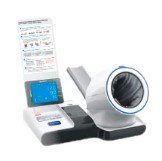Ensuring Timely Delivery of Specimens in US Medical Labs: Protocols and Importance
Summary
- There are strict protocols in place in US medical labs to ensure the timely delivery of specimens collected by phlebotomists.
- These protocols involve proper specimen handling, transportation, and communication between phlebotomists and lab technicians.
- Timely delivery of specimens is crucial for accurate and efficient patient care in the medical field.
Introduction
Medical labs play a crucial role in the diagnosis and treatment of diseases. Phlebotomists are responsible for collecting blood and other specimens for testing in these labs. It is essential that these specimens are delivered in a timely manner to ensure accurate and efficient testing. In the United States, there are strict protocols in place to ensure the timely delivery of specimens collected by phlebotomists. In this article, we will explore these protocols and how they contribute to the overall quality of patient care.
Proper Specimen Handling
One of the first steps in ensuring the timely delivery of specimens collected by phlebotomists is proper specimen handling. This involves following strict guidelines for collecting, labeling, and storing specimens to prevent contamination or degradation. Some key protocols for proper specimen handling include:
- Using sterile collection tubes and needles to prevent contamination.
- Labeling each specimen with the patient's name, date, time, and other relevant information.
- Storing specimens at the appropriate temperature to prevent degradation.
- Ensuring proper chain of custody for forensic specimens.
Transportation Protocols
Once the specimens have been collected and properly handled, they need to be transported to the medical lab in a timely manner. This requires adherence to specific transportation protocols to ensure the specimens arrive at the lab in good condition. Some key protocols for specimen transportation include:
- Using secure containers to prevent leaks or spills during transport.
- Following proper temperature controls to prevent degradation of temperature-sensitive specimens.
- Using a reliable courier service for timely delivery of specimens.
- Ensuring proper documentation and tracking of specimens during transportation.
Communication Between Phlebotomists and Lab Technicians
Effective communication between phlebotomists and lab technicians is essential for the timely delivery of specimens. Phlebotomists need to provide accurate and detailed information about each specimen to ensure it is processed correctly in the lab. Some key communication protocols include:
- Providing clear and legible labeling on each specimen.
- Notifying lab technicians of any special handling requirements for particular specimens.
- Communicating any issues or concerns with specimen collection or transportation.
- Following up with the lab to confirm that specimens have been received and processed.
Conclusion
Ensuring the timely delivery of specimens collected by phlebotomists is essential for accurate and efficient patient care in the medical field. By following strict protocols for specimen handling, transportation, and communication, US medical labs are able to deliver fast and reliable Test Results to Healthcare Providers. These protocols play a crucial role in maintaining the quality and reliability of medical testing, ultimately leading to better patient outcomes.

Disclaimer: The content provided on this blog is for informational purposes only, reflecting the personal opinions and insights of the author(s) on the topics. The information provided should not be used for diagnosing or treating a health problem or disease, and those seeking personal medical advice should consult with a licensed physician. Always seek the advice of your doctor or other qualified health provider regarding a medical condition. Never disregard professional medical advice or delay in seeking it because of something you have read on this website. If you think you may have a medical emergency, call 911 or go to the nearest emergency room immediately. No physician-patient relationship is created by this web site or its use. No contributors to this web site make any representations, express or implied, with respect to the information provided herein or to its use. While we strive to share accurate and up-to-date information, we cannot guarantee the completeness, reliability, or accuracy of the content. The blog may also include links to external websites and resources for the convenience of our readers. Please note that linking to other sites does not imply endorsement of their content, practices, or services by us. Readers should use their discretion and judgment while exploring any external links and resources mentioned on this blog.
